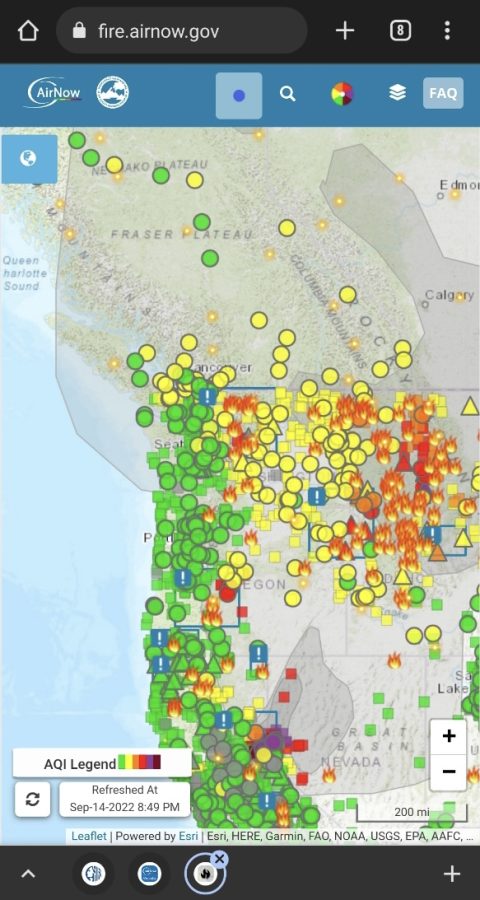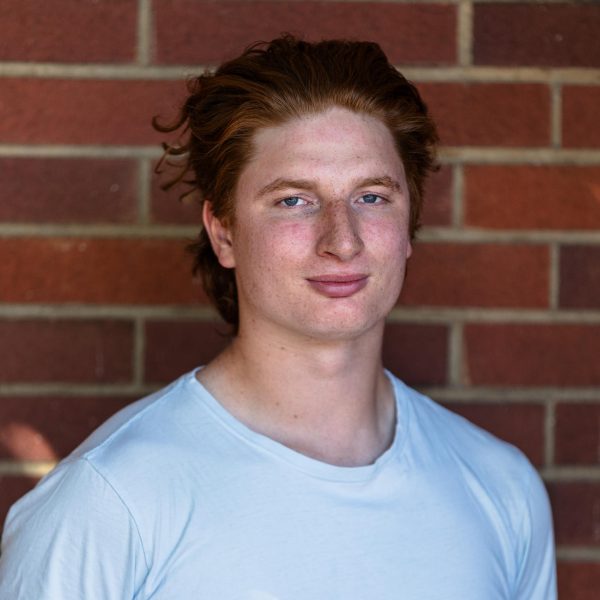World on fire
Fire season continues to expand across the Pacific Northwest
September 21, 2022

In early September, burn bans and air quality warnings were issued for Seattle and most of the surrounding areas, suggesting residents stay indoors and not light any flames outdoors. In addition, parts of US Highway 2 through Index, Washington, were shut down due to the Bolt Creek fire along with accompanying level three evacuation orders for Index residents and level two orders for residents of nearby Gold Bar, Washington.
At Seattle Pacific University, it is not only fires locally that create an impact. For those who are heading back to campus for the beginning of a new school year, the evacuation orders and road closures can significantly impact their travel plans.
Fourth year international business major Annelise Hoover shared her experiences traveling back to campus as well as wildfire evacuation orders.
“I drove through the fires going up to school. This one wasn’t as bad for me as the 2020 ones. So it was really just a lot of smoke,” Hoover said. “The last one, we were woken up by the fire department at three in the morning and they were like, ‘you have 10 minutes to get out of here.’”
Second year clinical psychology major Sophie Warren had different experiences.
“I live in Ventura, California,” Warren shared. “The biggest example of this for me personally is when the Thomas fire happened in Ventura County. But I think it was near 300,000 acres. It was like a lot of the backwoods of the county as well as all of the houses up on the hills that burned. I was out of school for a month and a half for that because the air quality was so bad. I remember waking up every morning and there was ash falling from the sky.”
Hoover and Warren also shared some of the fears within their communities.
“There was a lot of fear in terms of, I guess, getting away in time, especially with that 10-minute deadline,” Hoover said. “And we need to somehow get to the closest town which is a 15-minute drive away. How are we supposed to do that? In 10 minutes?”
Warren did not have to evacuate, yet had similar fears about the possibility of evacuating.
“I didn’t have to evacuate. I didn’t ever get quite to that point. But that first night that the fire started and spread rapidly was really scary for a lot of people cause the power went out and we could see the fire spreading. I could see it out my window up on the hills,” Warren said. “[Cell] service came in and out people were trying to call their friends. It was really scary because no one knew if anyone was okay that first night.”
Having a plan set up and being ready to evacuate is something that the California Department of Forestry and Fire Protection says is crucial to staying safe, and can “dramatically increase your safety and survivability” during fire season.
Warren shared the plan her family has in place in case of an emergency.
“We haven’t talked about it formally but we know where our friends live and we know where we would go based on where the fire was,” Warren shared. “ I think that after that everyone thought pretty hard about like what you would bring in the car if you had 10 minutes to pack like important documents.”

According to the US Environmental Protection Agency, climate change has been a driving factor in the increasing number and intensity of wildfires over the last few years, with an increase of ‘severely burned area’ from 5 to 23 percent, as well as the peak of fire season moving from August to July beginning in 2002.
Hoover believes there are underlying issues causing the change to fire season.
“I would call it climate change,” Hoover said. “I would say especially the lumber industry and everything, contributing all of those things into the air. I would say it’s definitely air quality and drought, and the winds have gotten worse over the years.”
Hoover shared how her community’s interaction has changed after the wildfires.
“I think what I’ve noticed is I think it doesn’t seem to matter what party you’re on. I’ve seen more, I guess, accordance in terms of that bringing those really separate sides together of what we’re doing now isn’t working,” Hoover said. “But at least from what I’ve seen, it seems to be bringing people more together and trying to figure out how to anticipate these things.”


























































































